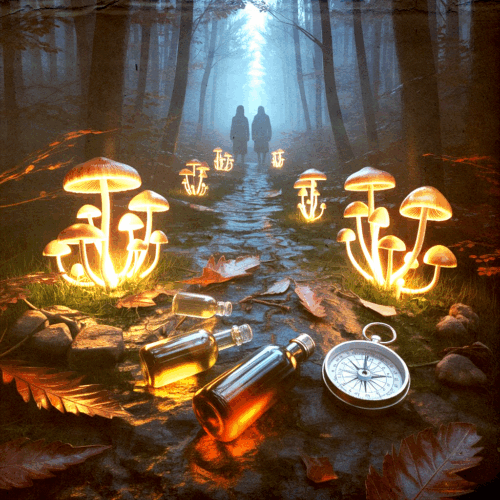The history of cannabis prohibition in the U.S. is a story of shifting laws, racial and political agendas, and evolving public perceptions, shaping its path from criminalization to legalization.
Understanding Marijuana Prohibition
The criminalization of marijuana in the United States is a tale of cultural shifts, political maneuvering, and societal transformation. From its ancient roots as a medicinal and industrial staple to its modern-day status as a controversial yet increasingly accepted substance, marijuana has played a complex role in American history. Understanding this journey is essential to grasping the ongoing debates surrounding its legalization and use.
Ancient Uses and Early American Adoption
Cannabis has been an integral part of human civilization for millennia, serving medicinal, recreational, and industrial purposes. Ancient Chinese texts praised its healing properties, using it to treat conditions like gout and malaria. Indian holy men incorporated cannabis into religious rituals, while Ayurvedic medicine recognized its therapeutic applications. Egyptian medical papyri document its use for treating glaucoma and inflammation. Greek physicians also valued marijuana for pain relief and other medicinal benefits.
Introduction to the Americas
When European colonists arrived in the Americas, they brought cannabis with them. The 17th and 18th centuries saw widespread hemp cultivation, particularly in Virginia, where colonial mandates required farmers to grow the crop. Figures like George Washington and Thomas Jefferson advocated for its agricultural benefits, as hemp’s durable fibers were essential for rope, textiles, and naval supplies. However, as the centuries progressed, shifting attitudes and increasing regulations began to overshadow its medicinal and industrial uses.
The Shift Toward Criminalization
The late 19th century marked the first wave of state-level restrictions on marijuana use. California was among the first states to ban cannabis in 1913, setting a precedent for other states to follow. By 1931, 29 states had enacted similar bans, reflecting growing concerns about public health, morality, and anxieties about social control.
Labeling as Poison
As the 19th century drew to a close, marijuana’s image shifted from a medicinal remedy to a perceived societal threat. Media sensationalism and political rhetoric fueled paranoia, leading to its classification as a poison in multiple states. This shift laid the groundwork for federal prohibition efforts.
Federal Prohibition Takes Hold
The early 20th century saw a full-fledged campaign against marijuana, driven by sensationalist media and influential figures such as Harry Anslinger, the first commissioner of the Federal Bureau of Narcotics. The infamous Reefer Madness propaganda and exaggerated claims of marijuana-induced violence and insanity fueled public hysteria. These narratives led to the passage of the Marijuana Tax Act of 1937, a pivotal moment in cannabis prohibition. This act imposed heavy taxes and regulations on the sale and possession of marijuana, effectively criminalizing its use and devastating businesses involved in cannabis production and trade.

The Underlying Motivations for Prohibition
While public health concerns were often cited as justification for prohibition, deeper political and social motivations were at play. Scientific studies, often flawed and politically influenced, perpetuated myths about marijuana leading to crime and moral degradation. However, racial prejudice played a significant role in the crusade against cannabis. Marijuana was associated with African American and Mexican immigrant communities, and its use was framed as a societal threat. Disproportionate enforcement targeted these groups, reinforcing discriminatory practices in the criminal justice system.
Political and Moral Motivations
Political figures and moral crusaders capitalized on fears surrounding marijuana use, linking it to social decay and lawlessness. These campaigns were often intertwined with broader efforts to control marginalized groups, maintaining racial and class hierarchies under the guise of moral purity.
The Counterculture Movement and the War on Drugs
By the 1960s and 1970s, marijuana had become a symbol of rebellion against authority. The counterculture movement embraced cannabis as part of a broader rejection of mainstream values, leading to an explosion in its popularity.
Cultural Impact
The influence of marijuana during this era extended beyond personal use. It became a focal point in art, music, and social change, shaping cultural icons and movements that challenged societal norms. Musicians, activists, and other influential figures such as Bob Dylan, The Beatles, and The Grateful Dead embraced marijuana as part of their defiance against institutional oppression. However, this cultural shift also provoked a fierce backlash, culminating in the Controlled Substances Act of 1970, which classified marijuana as a Schedule I drug—one deemed to have no medical value and a high potential for abuse. This designation severely restricted research and medical applications, keeping cannabis locked in a legal stranglehold for decades.
State-Level Reforms and the Road to Legalization
Despite federal resistance, cracks began to appear in marijuana prohibition by the 1970s and 1980s. Some states, like Oregon and Alaska, took steps toward decriminalization, signaling a shift in public perception. The momentum continued in the 1990s with the medical marijuana movement, as California introduced Proposition 215 in 1996, allowing patients to use cannabis for medical purposes. This landmark legislation set the stage for broader acceptance, eventually leading to the first recreational legalization efforts.
The Modern Legalization Wave
The 21st century has witnessed a dramatic transformation in marijuana policy. Colorado and Washington spearheaded recreational legalization in 2012, proving that regulated cannabis markets could thrive. Today, dozens of states have followed suit, fueling a booming industry that generates billions in tax revenue and creates thousands of jobs. However, federal law remains at odds with state policies, creating a patchwork of regulations that continue to spark legal battles and political debates.
The Social and Economic Implications
Economic Benefits
The legal cannabis industry has brought substantial economic benefits, including tax revenue and job creation. The industry’s rapid growth has supported local economies and fostered innovation, leading to an expansive market with increasing demand for skilled workers and ancillary services. States that have embraced legalization have reaped significant financial rewards, using cannabis tax revenues to fund education, infrastructure, and public health programs.
Social Justice and Equity
Addressing past injustices related to marijuana prohibition is a critical aspect of the legalization movement. Efforts to expunge prior marijuana-related convictions and promote equity in the legal cannabis market aim to rectify the disproportionate impact of prohibition on marginalized communities. Social justice initiatives seek to ensure that those most affected by past criminalization have opportunities to participate in the legal industry.
Controversies and the Federal Roadblock
Despite progress, legalization remains a contentious issue. Concerns about youth access, impaired driving, and public health persist, prompting ongoing research and policy adjustments. The conflict between federal and state marijuana laws presents significant legal and political challenges. As long as federal prohibition remains, cannabis businesses operate in a legal gray area, highlighting the urgent need for comprehensive reform.
The Future of Cannabis Policy
The history of marijuana prohibition in the United States is one of shifting narratives, deeply entrenched biases, and hard-fought victories. As public opinion continues to evolve and the legal landscape transforms, the future of cannabis remains uncertain but undeniably promising. The push for federal legalization, coupled with growing awareness of the social and economic benefits, suggests that cannabis policy will remain at the forefront of national debate for years to come.

***
Trap Culture is the ultimate destination for cannabis enthusiasts who want to experience the best of Arizona’s cannabis culture. Whether you are looking for the hottest cannabis-friendly events, the latest news on cannabis legalization, trends in the industry and exclusive, limited-edition products from the top brands in the market, Trap Culture has you covered. Visit our website to learn more about our events, our blog, and our store. Follow us on social media to stay updated on the latest news and promotions. Join the Trap Culture family and experience the most immersive and engaging social cannabis events in Arizona.
Follow us on social media




